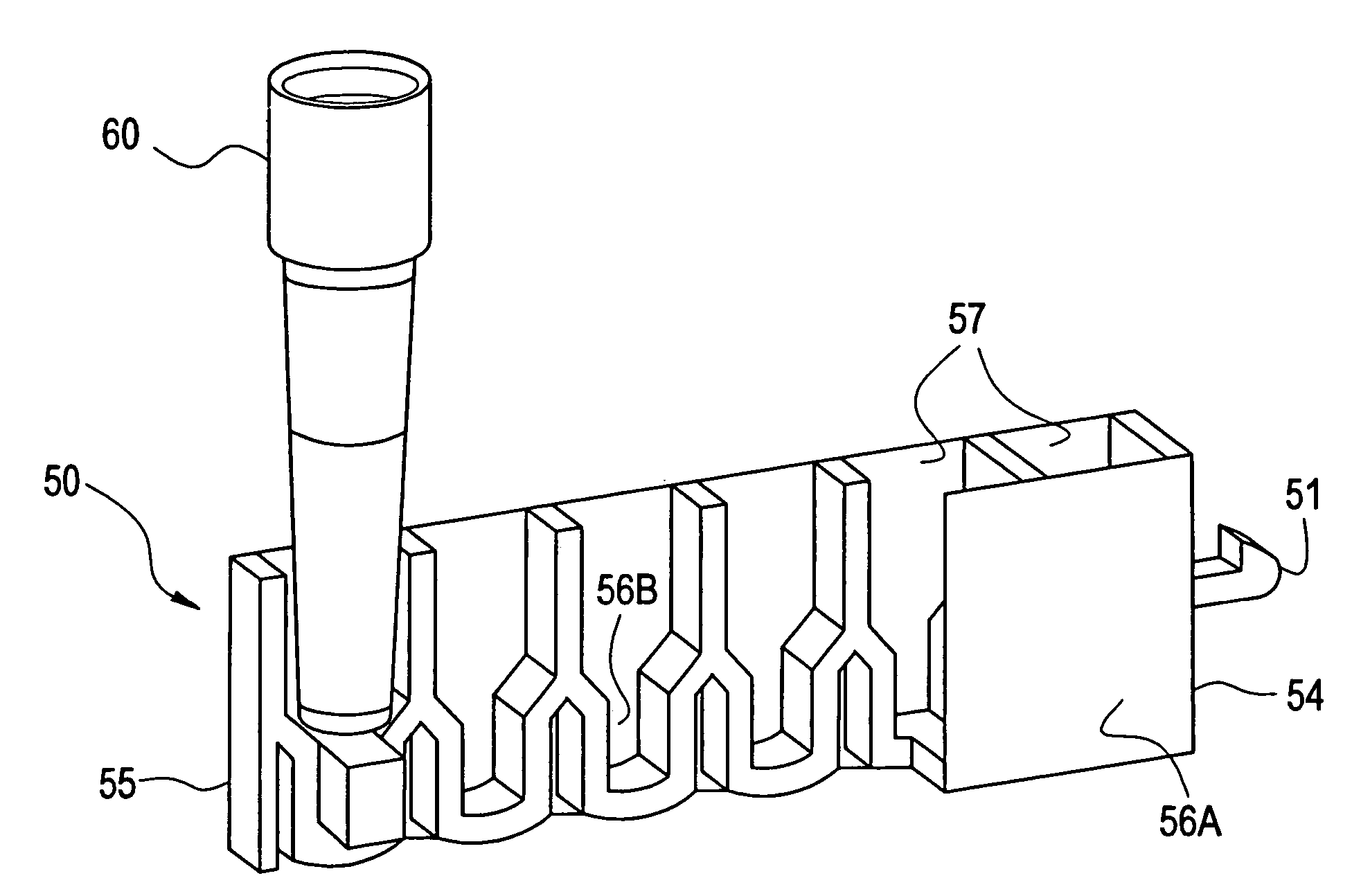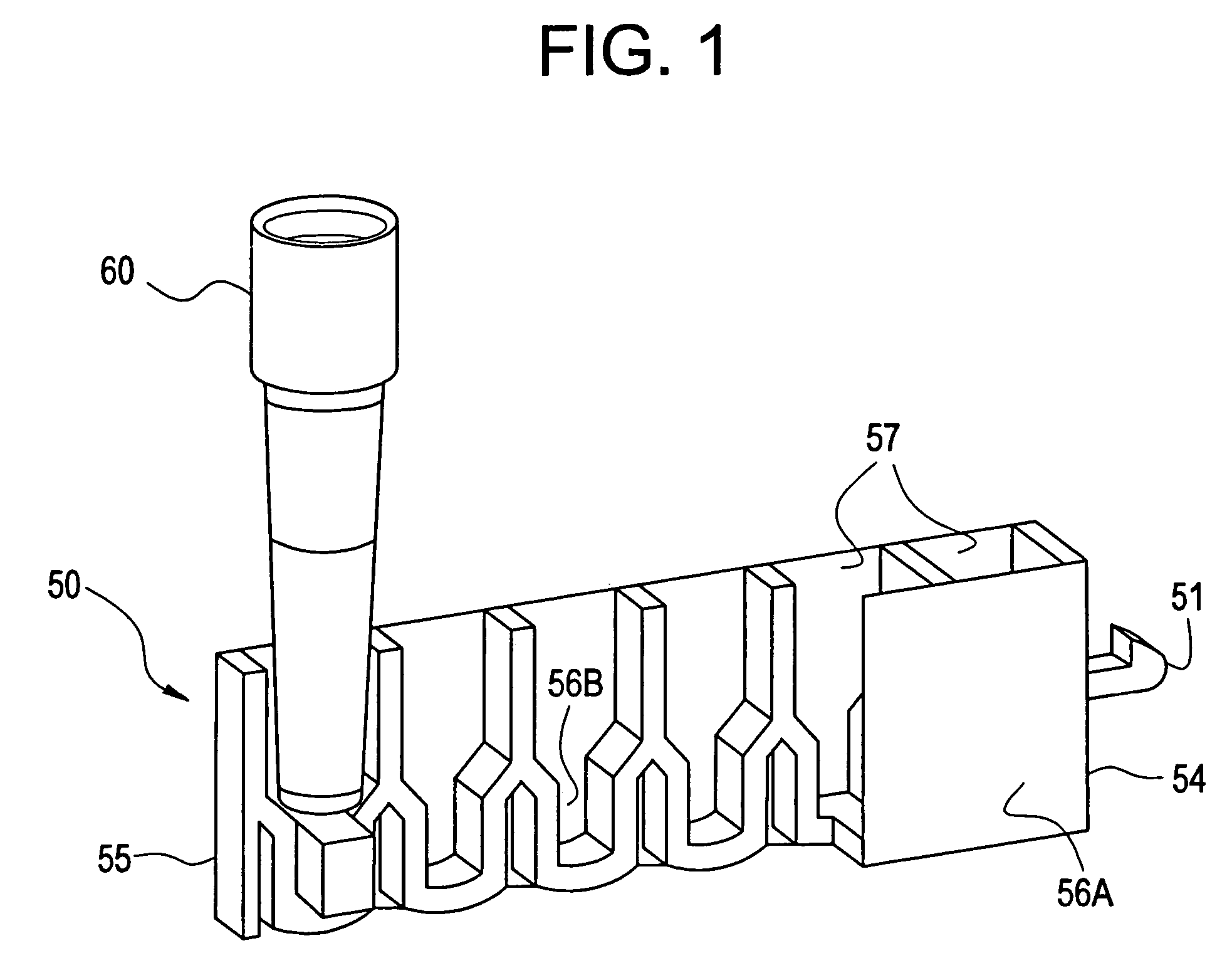Stabilizing a cuvette during measurement
a cuvette and stabilizing technology, applied in the field of measuring, can solve problems such as inconvenient measurement, and achieve the effects of shortening the integration time, and reducing the number of measurements
- Summary
- Abstract
- Description
- Claims
- Application Information
AI Technical Summary
Benefits of technology
Problems solved by technology
Method used
Image
Examples
Embodiment Construction
[0029]To assist in minimizing or even substantially eliminating the motion of the cuvettes, one aspect of the present invention includes a device for stabilizing a cuvette. The device is generally arranged in the path of cuvette travel in the measurement station of an analyzer. The analyzer can include any known instrument capable of taking a measurement of a previously unknown or unquantified analyte in a sample and through measurements and further processing, such as data processing either by hand or through the use of a computer or CPU, provide an indication of the presence of an analyte and / or the quantity of an analyte in the sample. In a preferred embodiment, the analyzer is a diagnostic analyzer, such as a clinical or immunodiagnostic analyzer and the sample is blood, serum or plasma. Other analyzers that would benefit from the present invention include analyzers such as chemistry analyzers used in a setting such as a chemistry laboratory or industrial setting.
[0030]Not shown...
PUM
| Property | Measurement | Unit |
|---|---|---|
| integration time | aaaaa | aaaaa |
| step angle | aaaaa | aaaaa |
| step angle | aaaaa | aaaaa |
Abstract
Description
Claims
Application Information
 Login to View More
Login to View More - R&D
- Intellectual Property
- Life Sciences
- Materials
- Tech Scout
- Unparalleled Data Quality
- Higher Quality Content
- 60% Fewer Hallucinations
Browse by: Latest US Patents, China's latest patents, Technical Efficacy Thesaurus, Application Domain, Technology Topic, Popular Technical Reports.
© 2025 PatSnap. All rights reserved.Legal|Privacy policy|Modern Slavery Act Transparency Statement|Sitemap|About US| Contact US: help@patsnap.com



